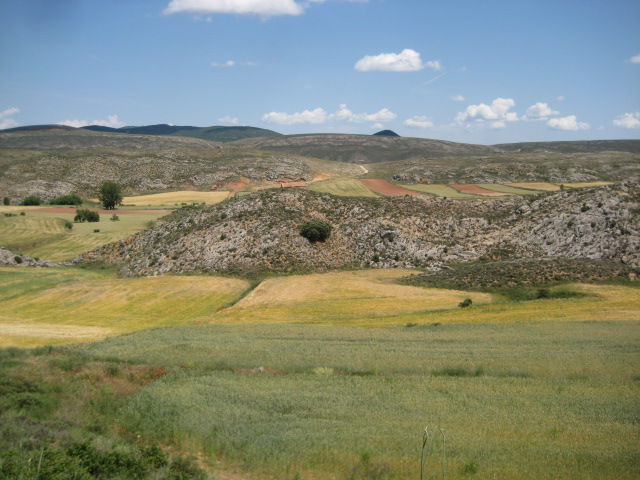A new method to help recover ecological functions and foster the sustainable development of rural areas
Spanish National Research Council press release
Ecologists have developed a new method to prioritize natural sites for restoration actions aimed to improve the provision of ecosystem services. Their findings are published in the Journal of Applied Ecology today.

Ecosystem services are environmental resources and goods which benefit the general public, e.g. farmland and mine zones provide food and minerals, respectively. The intensive use of the land to produce food and minerals negatively affects the provision of other types of services such as the elimination of pollutants, floods and drought mitigation, and reducing soil loss.
Cultural services (recreational, aesthetic and spiritual benefits), and basic processes (soil formation, biological productivity and habitat conservation) which support these services are also important factors provided by ecosystems. As an example, the margins of a river with clean water and a well-established riparian forest give us much more benefits than those of a river with turbid water and no riparian forest. A landscape made of a mosaic of mountains and leafy valleys with integrated farmlands is much more appreciated than a site with contaminated air produce by smoking factories and intensive agrarian monoculture and big industrial animal farms.
A method has been developed by ecologists from Spain, Switzerland and Colombia in the river Piedra watershed (Guadalajara-Zaragoza, Spain) to select sites and restoration actions aimed to improve the provision of ecosystem services in this area. The method consists of evaluating ecosystem services based on set criteria after field and laboratory work and assigning a relative importance weight to the different services based on the ecological status of the watershed. Soil retention and provision of habitat for biological species are two of the underscored services in the Piedra watershed.
“Experts in ecological restoration can then define actions which will improve the provision of services at small and large scales“, said lead author Professor Francisco A. Comín from the Instituto Pirenaico de Ecología at the Spanish National Research Council (CSIC).
The method is synthetized by the RAVES index which assigns a Relative Aggregated Value of Ecosystem Services with a high spatial resolution. RAVES is an index resulting from the process of aggregating the weighted values of ecosystem services, based on expert and stakeholder participation, which identifies priority sites for restoration at a watershed scale.
The Piedra model, using the RAVES index, is a tool to help decide which zones of the territory will benefit most from restoration actions and as a result increase the provision of their ecosystem services. It also allows to quantify the ecosystem services provided an area in different land use scenarios. In the case of the River Piedra watershed, the best-case scenario to improves the provision of ecosystem services as a whole consists on the reforestation of public land around the Tranquera reservoir and restoring riparian zones of the River Piedra, private farm lands and wetlands in the upper zone of the watershed to avoid soil loss and to remove pollutants discharged after the use of fertilizers.
All these restoration actions, if applied in the sites prioritized by RAVES, will increase the agrarian production, extend recreational activities, and recreate degraded habitats throughout the watershed, which are instrumental actions for the sustainable development of this rural and depopulated region.
Read the full article (freely available for a limited time):
Comín FA, Beatriz M, Ricardo So, et al. Prioritizing sites for ecological restoration based on ecosystem services. J Appl Ecol 2017. DOI: 10.1111/1365-2664.13061
Media contact:
Prof. Dr. Francisco A. Comín, Instituto Pirenaico de Ecología-CSIC, Email: comin@ipe.csic.es; Tel: +34 (0)976-369393 (ext. 880061)
Like what we stand for?
Support our mission and help develop the next generation of ecologists by donating to the British Ecological Society.